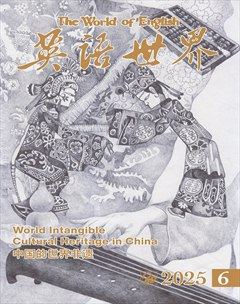The abacus1 has been used in China for millennia, and although its popularity has declined since the invention of hand-held electronic calculators in the 1970s, it remains in widespread use among traders and clerks in Asia and Africa, in shops, restaurants and street stalls. Family-owned stores in Hong Kong and Macao, particularly those selling traditional Chinese medicine, use abacuses, and it is much the same in Chinatowns in North America.
算盘在中国有数千年历史。尽管20世纪70年代手持电子计算器问世以来,其受欢迎程度有所下降,但在亚洲和非洲的商贩和文员手中,在商店、餐馆和街头摊位,算盘仍然广泛使用。香港和澳门的家族经营商铺,尤其是中药铺,仍在使用算盘,北美华人社区亦是如此。
Many factors contribute to the staying power of this ancient device—it’s cheap to produce, easy to use, and requires no electricity—but perhaps the most significant is the same factor that has cemented2 its place in Chinese culture. While the origin of the abacus itself remains unknown, China can claim the best and most widespread method for using it: zhusuan.
这一古老的计算工具经久不衰有许多原因:它成本低廉,操作简便,无需电力。然而,最关键的因素或许就是它扎根中华文化的那个缘由。尽管算盘的起源尚不明确,但中国可以说拥有世界上最先进、最普遍的算盘使用方法——珠算。
Rise of mathematics
数学的诞生
The abacus is the oldest and most widely used tool for calculation in the world, appearing in Mesopotamia3 as early as 2700–2300 BC. Many early civilisations, including the Babylonians and Egyptians, utilised a rudimentary4 form of the abacus, but it was the Persians who exported the abacus to Europe and Asia.
算盘是世界上最古老、使用最广泛的计算工具,早在公元前2700至2300年就已出现在美索不达米亚。巴比伦和埃及等许多早期文明都使用原始算盘,而将算盘传播到欧洲和亚洲的则是波斯人。
The earliest record of the Chinese abacus, known as suanpan (counting tray), is an illustration from Supplementary Notes on the Art of Figures5 by Xu Yue6. Published in 190 AD, the book also introduced zhusuan as a method for performing mathematical calculations with an abacus.
关于中国算盘的最早记载出现在公元190年徐岳所著《数术记遗》中的一幅插图。除算盘外,该书还介绍了利用算盘进行数学计算的方法——珠算。
Zhusuan likely predates7 the invention of the decimal system8 by Indian mathematicians between the first and fourth centuries AD, and builds on a long tradition of mathematical innovation in China.
珠算是中国数学长期创新发展的成果,其出现时间很可能早于印度数学家在公元1至4世纪间发明的十进制。
The earliest surviving evidence of mathematics dates from the Shang Dynasty (1600–1046 BC) in the form of numbers scratched into tortoise shells. It was the most advanced number system in the world at the time, enabling calculations on number rods, and eventually, on suanpan.
现存最早的数学证据可以追溯至商朝(公元前1600—前1046);当时,人们在龟甲上刻下数字。这是当时世界上最先进的数字系统,使得人们可以使用算筹进行计算,并最终发展出算盘。
Suanpan were typically constructed of bamboo with seven or more fixed wires or wooden rods affixed9 to metal reinforcements10. Beads were attached to each wire or rod, organized into an upper and lower deck. The upper deck, known as heaven, carried two beads per rod or wire, each with a value of five. The lower deck, known as earth, carried five beads per rod or wire, each with a value of one. This was the 2/5 abacus11 and remained in common use until the 1850s when a 1/4 abacus12 went into production.
传统算盘通常由竹子制成,设有七根或更多固定的金属或木质算珠轴,并以铜铁件加固。





